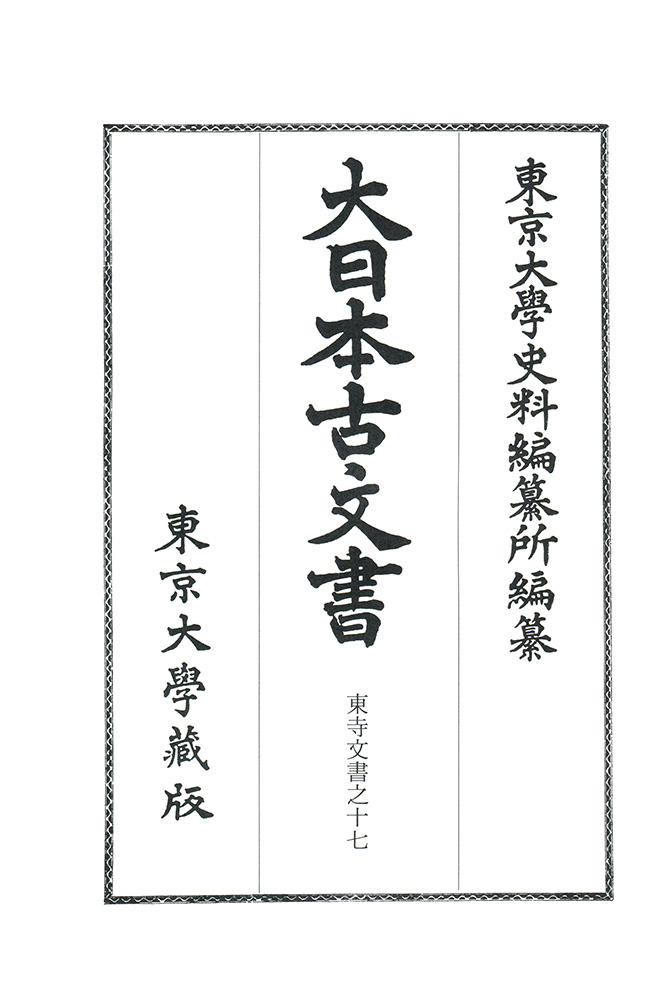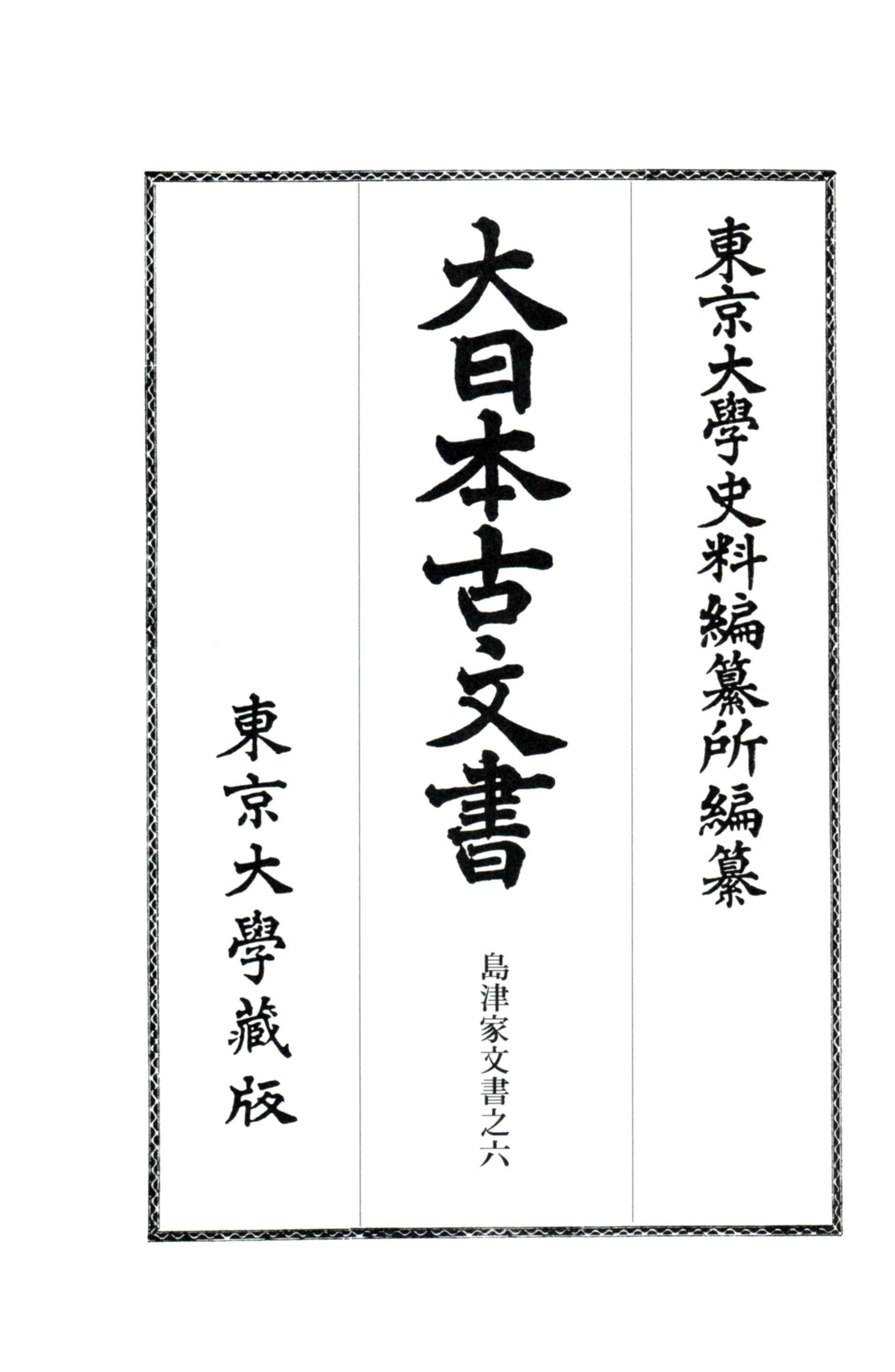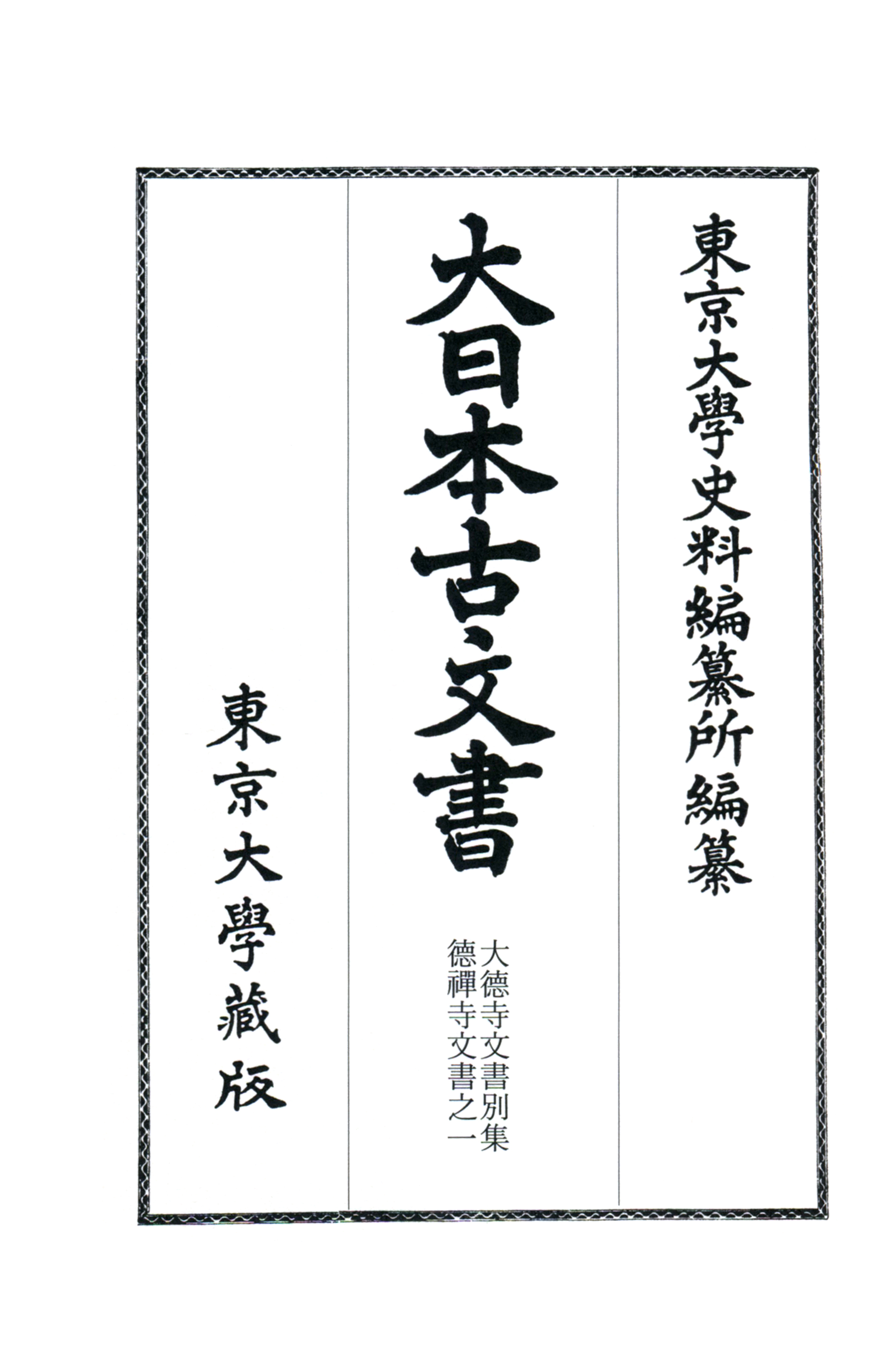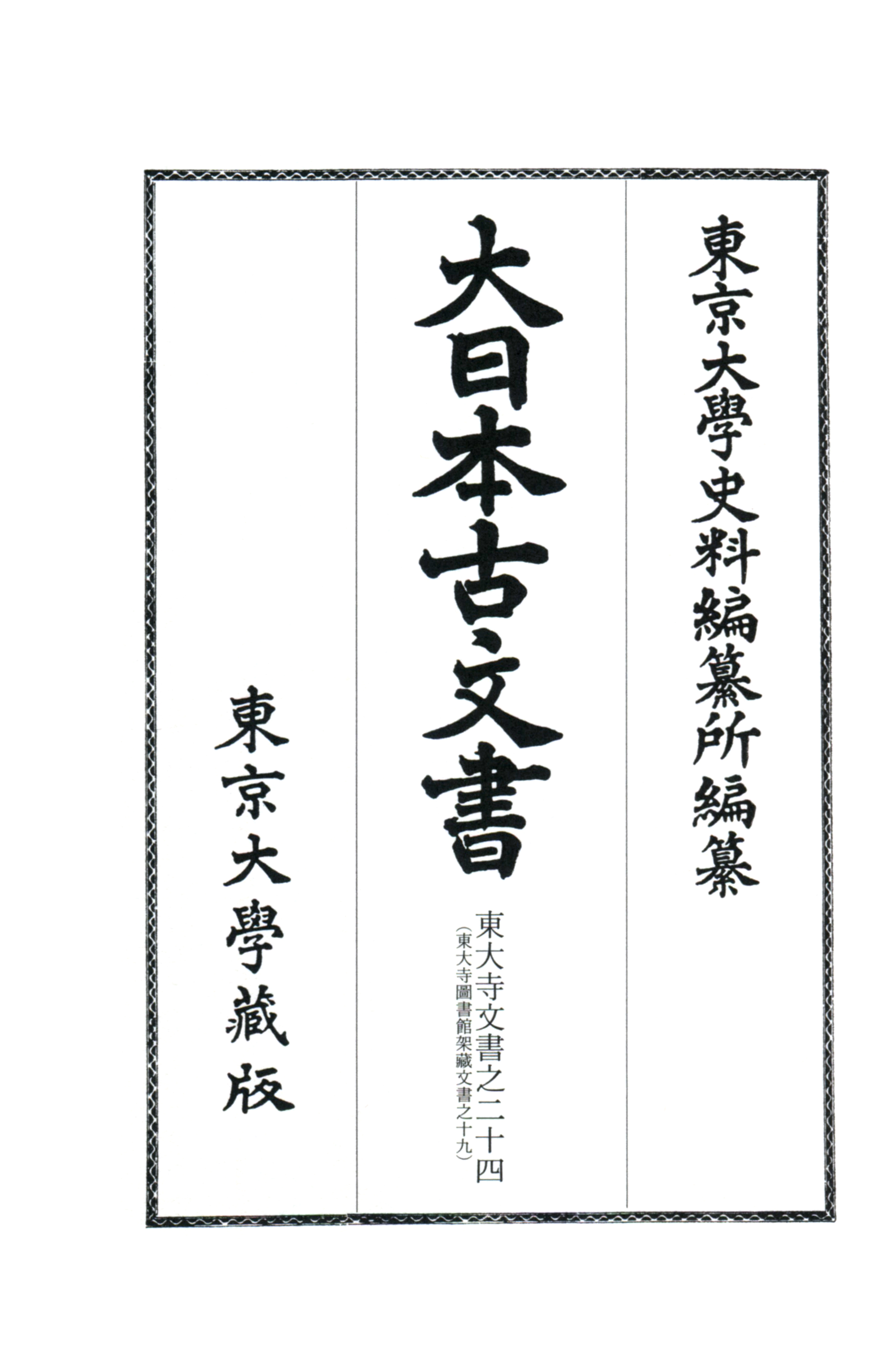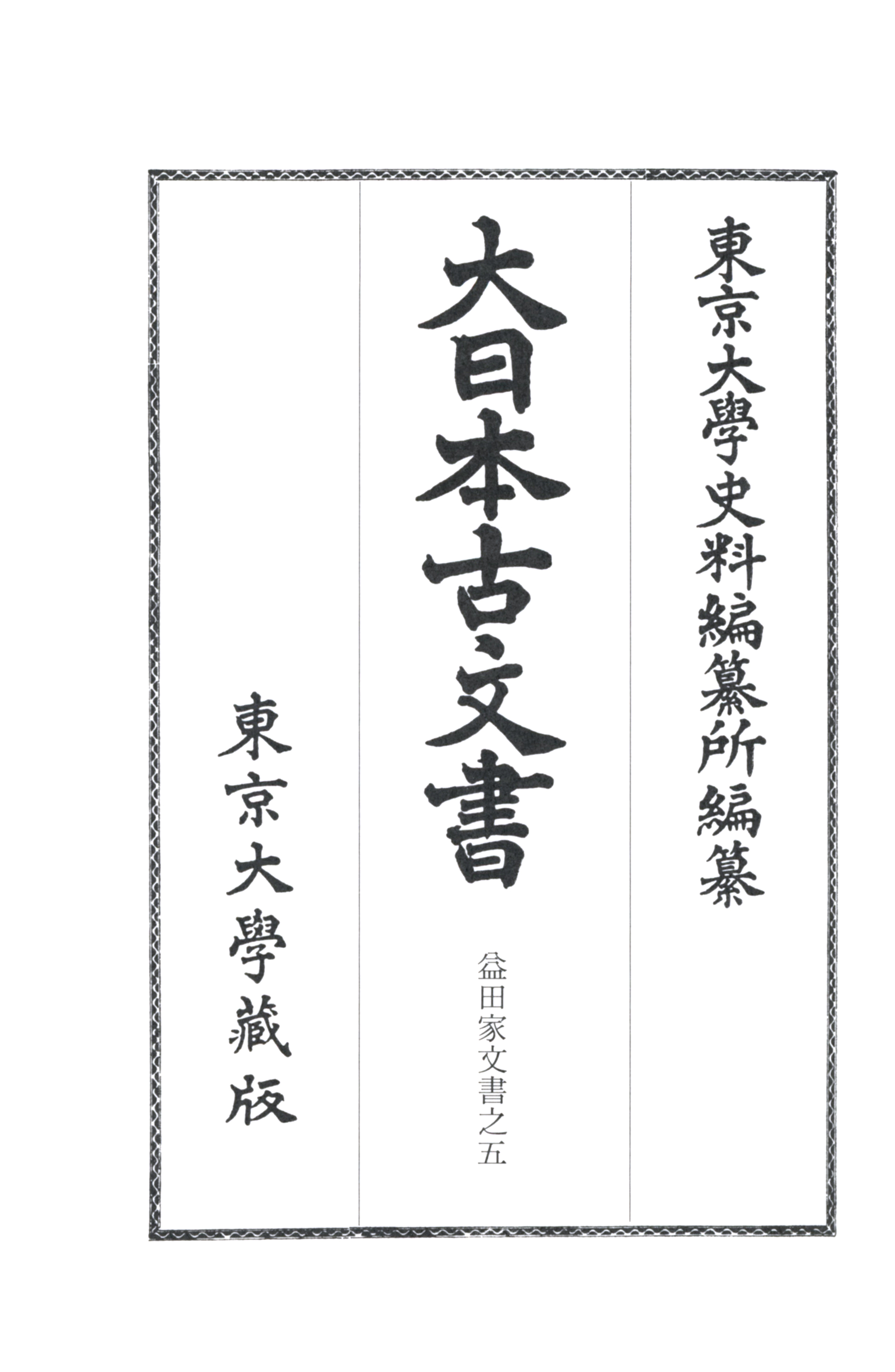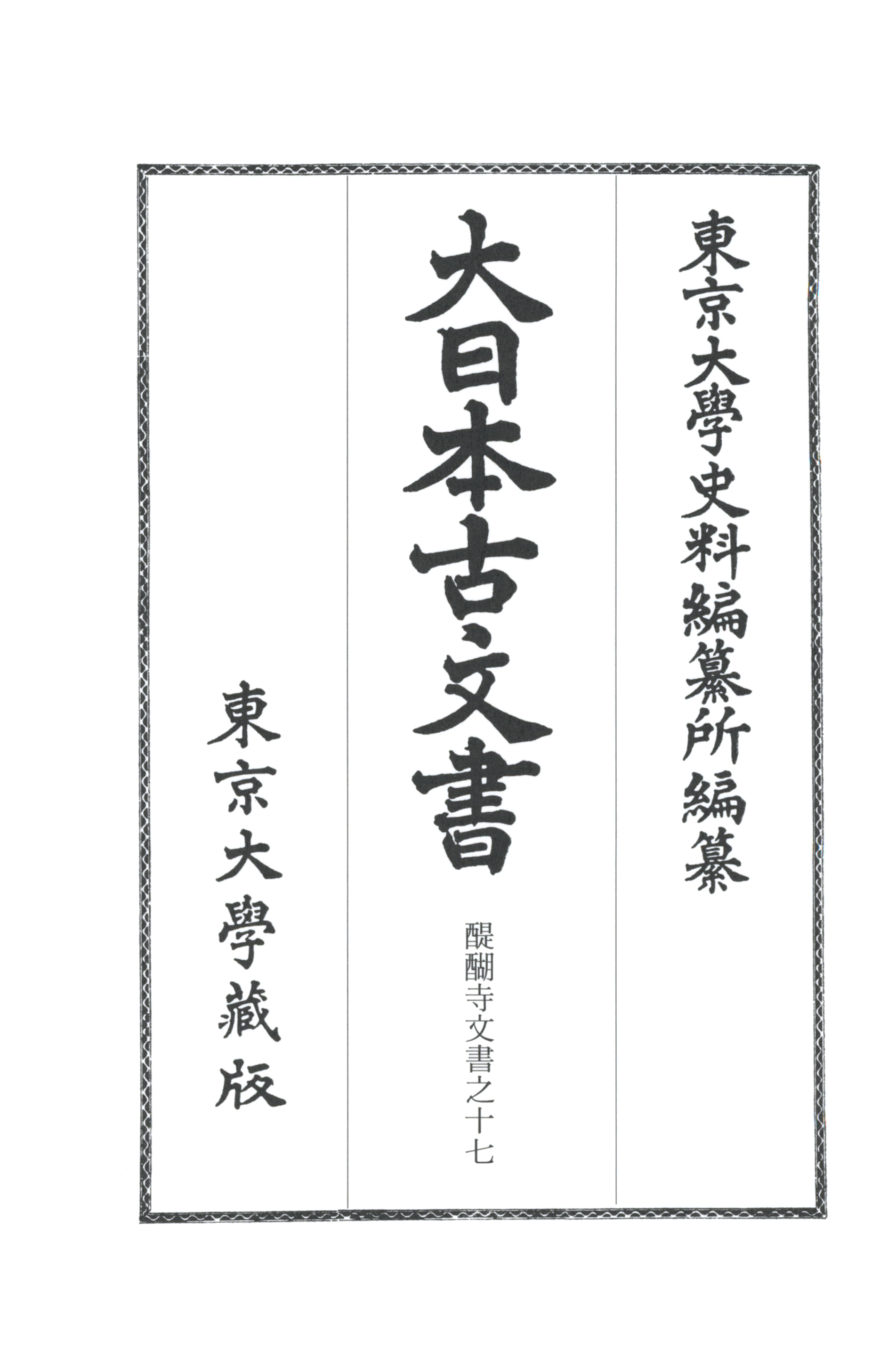
Title
Dai-Nihon Komonjo Iewake dai 19, Daigoji Monjo 17 (Old Documents of Japan: Temple and Family Collections 19: Daigoji Documents, Vol. 17)
Size
360 pages, A5 format
Language
Japanese
Released
July 15, 2021
ISBN
978-4-13-091252-5
Published by
University of Tokyo Press
Book Info
See Book Availability at Library
Japanese Page
Old Documents of Japan is a series of collections of basic historical sources for the study of Japanese history, and since the publication of the first volume in 1901 it continues to be compiled and published by the Historiographical Institute. One of these collections is Temple and Family Collections 19: Daigoji Documents, which provides transcriptions of documents preserved at Daigoji, a famous temple of the Shingon sect in Fushimi ward, Kyoto.
The Daigoji documents comprise documents preserved in sub-temples within the precincts of Daigoji such as Sanbōin and Rishōin, and they have been designated a national treasure on account of the fact that they are valuable historical sources containing a wealth of material ranging from the Nara period to modern times. The Daigoji documents are stored in wooden boxes, more than 800 in number, and they continue to be sorted and investigated today.
In Temple and Family Collections 19: Daigoji Documents, the Daigoji documents, often written in difficult-to-read cursive style, have been accurately deciphered and typeset together with detailed notes, starting from box no. 1 and in the order of the documents’ reference numbers. Volume 17 contains documents 1–198 in box no. 25 of the Daigoji documents.
The documents in this volume date mainly from the Nanbokuchō and Muromachi periods, with some dating from the early Edo period. The documents in box no. 25 do not share any overall common character, and they have generally been arranged in chronological order, starting from the oldest. It is to be surmised that reference numbers were added when the documents were being sorted in modern times.
The contents of the documents included in this volume are wide-ranging, and they include, for example, documents related to the New Year’s service held in the Lecture Hall at the temple Tōji and documents concerning the landholdings of Gyōjuin, one of Daigoji’s sub-temples. Of particular interest is a group of documents relating to the appointment of the abbot of Kongōbuji on Mount Kōya. These documents were preserved because Gien, a well-known Daigoji monk at the time of Toyotomi Hideyoshi, reformed the method of appointing the abbot of Kongōbuji, and they include documents in Gien’s own hand. There are also several documents relating to a series of eight lectures on the eight scrolls of the Lotus Sutra that were hosted by the Muromachi shogunate and held at Tōjiji, a temple in Kyoto. These are lists of the monks and members of the nobility who attended and are important source materials for considering temple society during the Muromachi period. There are also many copies of historical sources and notes in Gien’s hand, and he may have made use of them when compiling the Daigoji shin yōroku.
There are still documents in box no. 25 that have not been included in this volume, and it is planned to publish them in the next volume.
(Written by TAKAHASHI Shinichiro, Professor, Historiographical Institute / 2021)



 Find a book
Find a book


